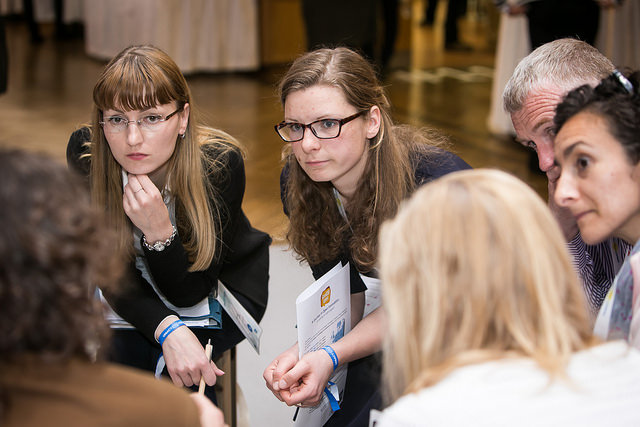Innovating in City Learning. The Inside Story of the first URBACT City Festival
Edited on
28 June 2019The recent URBACT City Festival, that took place in Riga from 6-8 May, aimed to inspire urban futures through innovative exchange and learning. One of the URBACT programme’s core objectives is to support cities in their capacity to develop and implement integrated urban strategies and actions. Events like the City Festival form one part of an overall programme strategy, along with city networks, capitalisation of urban knowledge and other initiatives (Summer Universities, training seminars in the 29 member states or training schemes for elected representatives all over Europe).
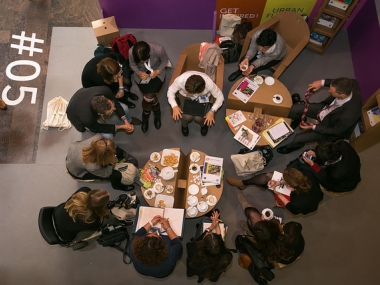
URBACT has a strong track record in designing and delivering innovative learning experiences. A study by Ekos published in 2014 reported that ‘URBACT represents an unrivalled approach in applying a comprehensive and complementary range of learning concepts that are considered state-of the art. These include strong elements of the ‘Collective Learning’ and ‘Communities of Practice’ concepts as well as a close alignment with the ‘Action Learning’ approach’. With this new event- a City Festival- we hoped to bring cities from across the EU together and provide a new kind of platform for urban practitioners to learn, to inspire and be inspired by each other about urban futures.
Registrations reached capacity a month before the event and from the onsite buzz and formal feedback we can be sure that the 470 people who attended enjoyed the experience. What is more, 91% declared that their general knowledge had improved after the Festival! (1)
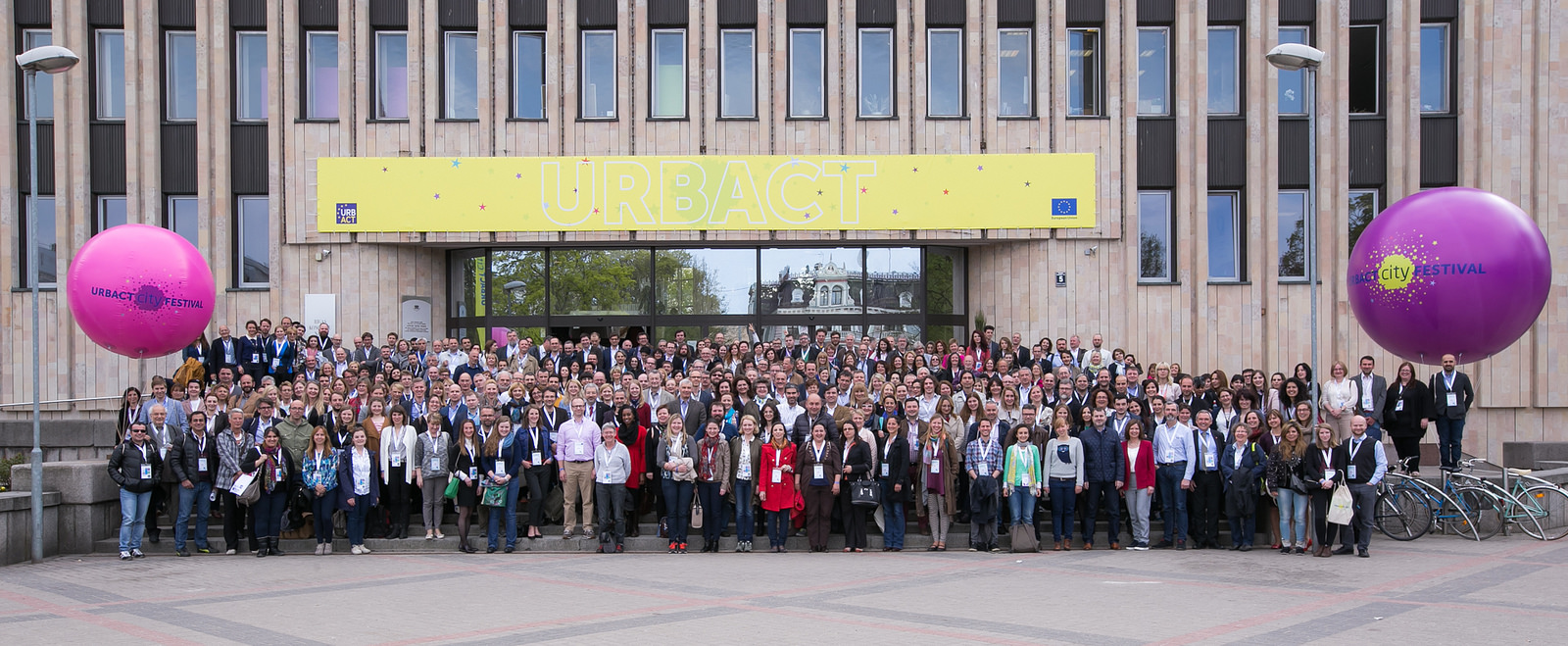
But what do we know about how cities learn? How did we adapt the URBACT approach to the Festival? What were the main success factors? Here are some post event reflections on what makes a City Festival work.
A balanced programme of rich and varied thematic input
The choice of themes addressed in the sessions was carefully curated to represent different urban challenges and the URBACT acquis. Environmental, economic and social issues were covered with examples from all corners of the European Union, featuring reports on the most up to date ‘thinking and doing’ live from cities, ranging from social innovation, to compact cities, place making, sustainable regeneration, mobility and much more. Importantly, each participant was able to make their own choices, to select the urban topics of most interest to them, and create a personalised learning journey through the Festival.

URBACT generated knowledge
The Festival line-up made of experts, presenters, Walkshop leaders, workshop coordinators, Get Inspired speakers, Meet the Cities host were all recruited from the pool of knowledge generated by the URBACT II programme and its partners. It was ‘home grown’ talent. People who have an understanding of the need for integrated and participative approaches, familiar with URBACT methods, willing to share the lessons, the experiments, both failures and successes in imaginative and thought provoking ways. In all sessions there were practical and concrete suggestions for tools and solutions that cities can make use of. Often the transfer of even small ideas for different urban approaches can trigger subtle but distinct improvements in practice ‘at home’. We know that these small ideas, generated by hearing directly from other cities’ initiatives, can be influential in changing existing practice.
Thanks for such an inspiring event! We come back home with lots of energy to move forward!
- City representative, URBACT network
High levels of interactivity
The level of interactivity, having small groups work together at four different moments, in different sessions, was quite a logistical challenge for such a large event. The Festival team carefully formulated groups for each session to have 5 or 6 as an optimum group size to facilitate a good conversation, and continually mixing people up for URBACT Café, Unpacking Knowledge and Idea Factory, so that participants would be in a different group, meeting new people, who had been participating in different thematic sessions. This way the thematic exchange was maximised, participants got to hear about different subjects and had a good exposure to other perspectives.
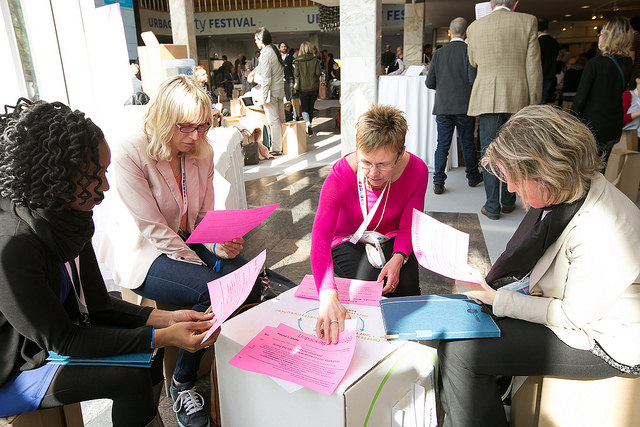
Combining methods for different learning styles
From the experience of URBACT networks we are aware of the need to use tools to support visual, auditory and kinaesthetic learning and that tacit and hands- on experiences are effective for groups of urban practitioners from different countries, of whom the majority are non-native English speakers. All sessions had strong visual inputs in the set-up and presentations. Most had an element of physical movement. Changing groups and locations for every session was also a way of maximising creative potential, and making sure that no-one got stuck or bored. Experiencing these methods first hand really helped participants understand the value.
For the first time I understood, what ‘interactive’ really means. Thanks!
- City Representative, URBACT Network (LT)
Individual and collective reflection
Built into the programme, at mid way and end points were spaces for structured conversations to process the knowledge and Festival experience. These moments of critical reflection and sense making, of verbalising, thinking aloud, consolidating, and starting to plan what actions could be used back home, help to avoid a situation of input overload or passive theoretical knowledge acquisition. An additional innovation was the Idea Factory and use of cardboard boxes to work around, with a series of tasks in envelopes stuck on the side. The ‘answers’ or ‘solutions’ were drawn on the box, with a final display and gallery walk of all the results on stage.
Capturing insights
From the outset each participant was given the mission to ‘collect- connect and co-create’ on the theme of urban trends, as a core thread running through all activities. The Festival pack contained, amongst other things, a Journal and supersize post-its, to document insights, ideas and practices along the way. Opportunities to share these insights came during the small group sessions and informal networking. The individual records were taken home as aide memoires.
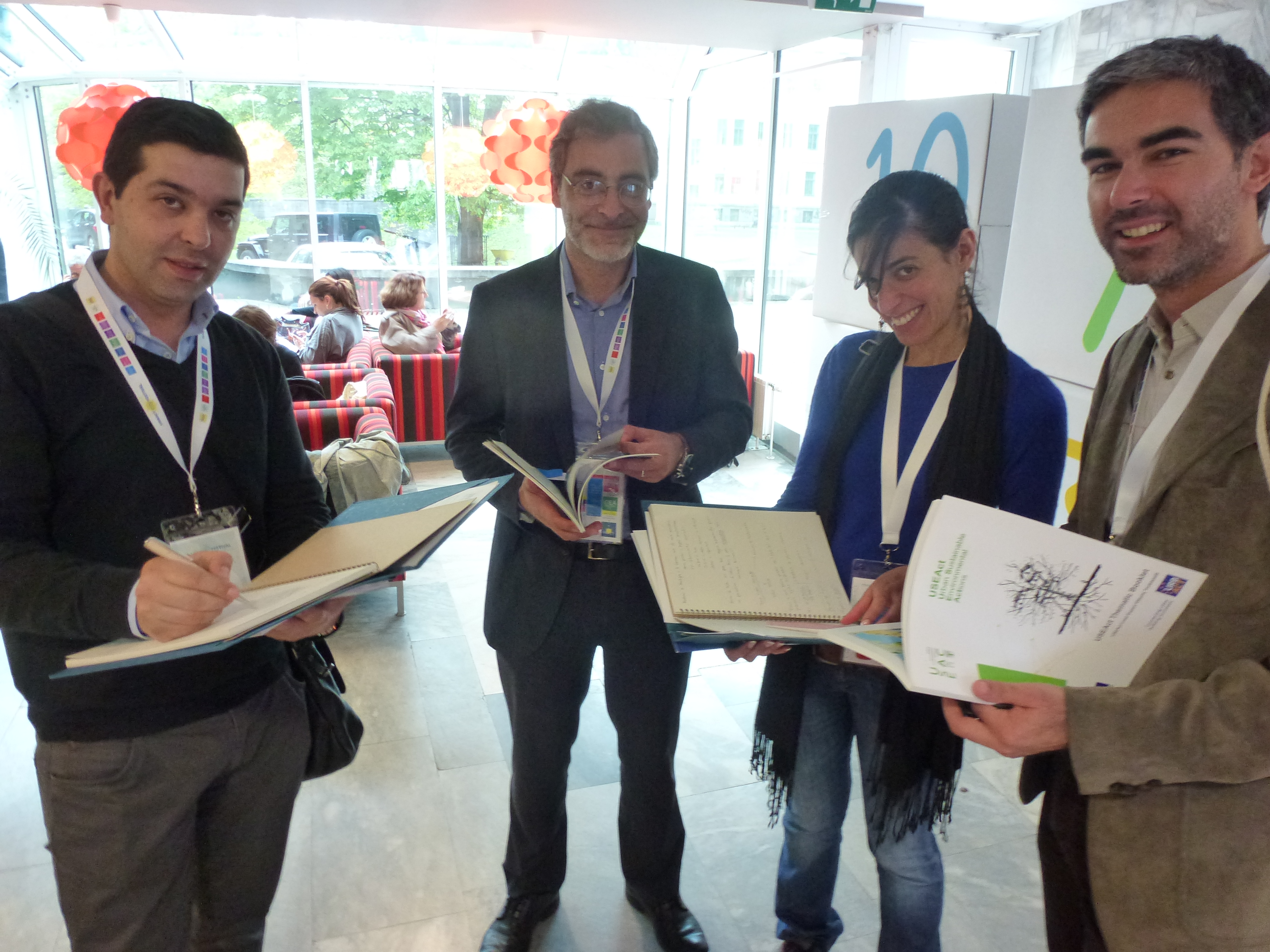
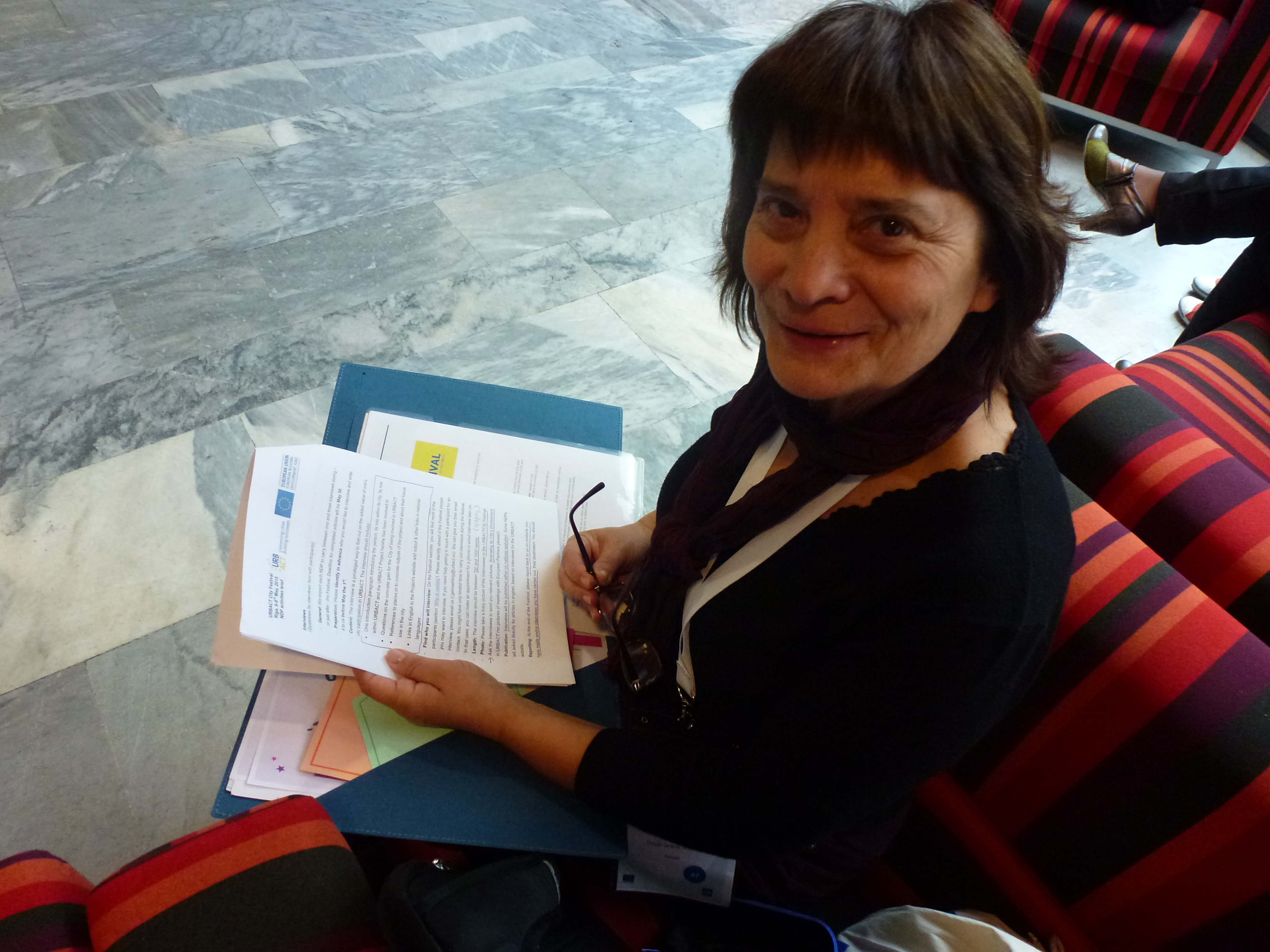
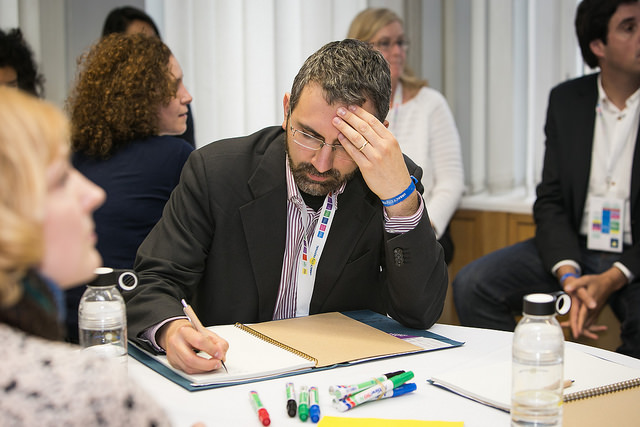
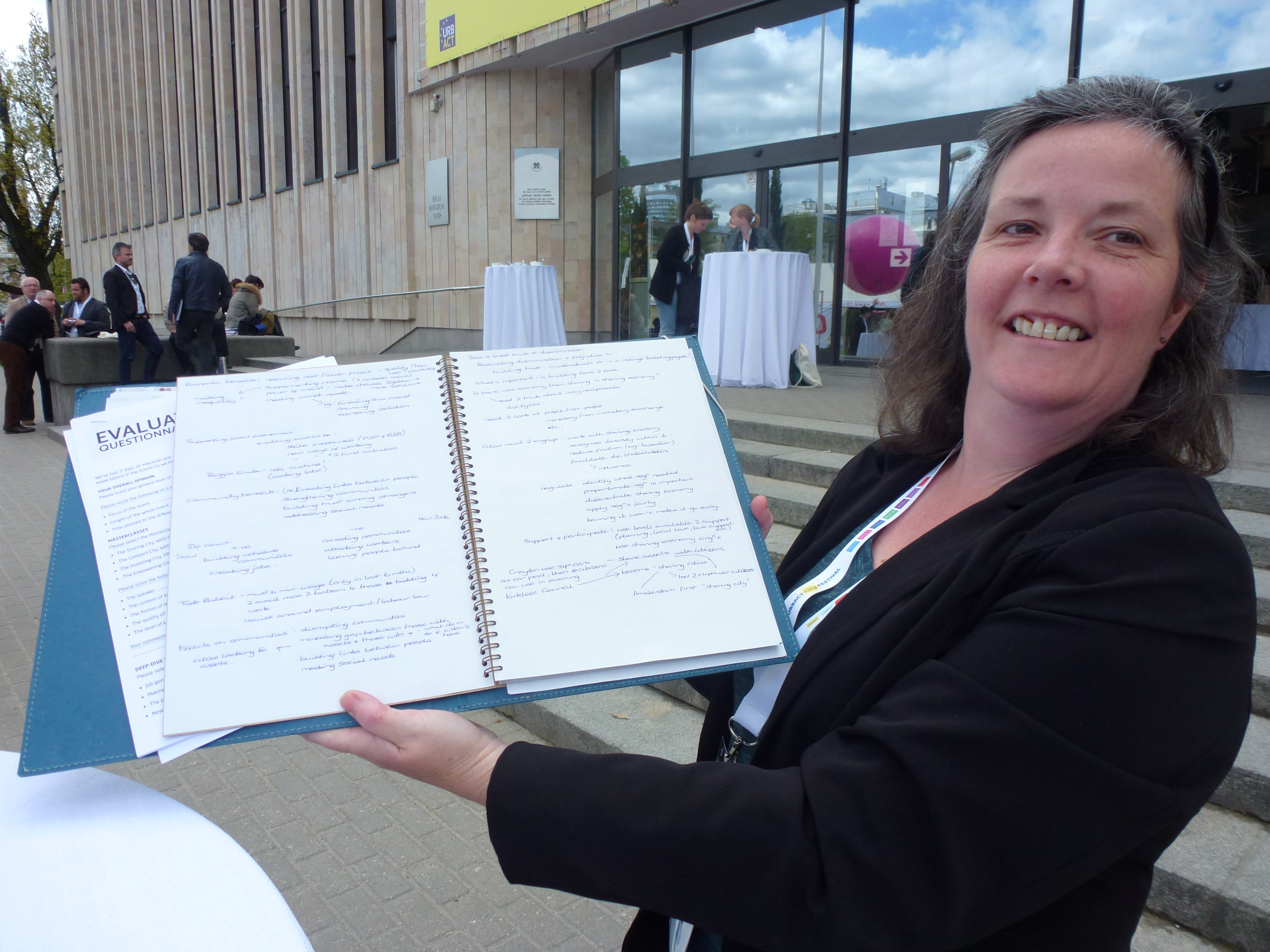
The City of Riga as anchor and backdrop
Unlike most international conferences a conscious strategy was deveoped to interact with Riga, its inhabitants and urban stakeholders. The Mayor of Riga, Nils Usakovs, gave a formal welcome. URBACT networks led a series of Walkshops, like urban safaris, around the city, connecting the results of their work to Riga’s own urban challenges and approaches, bringing the issues to life by seeing, touching, feeling the city at work.
Festival atmosphere
Creating a Festival atmosphere was key. Central to the event was the notion that urban knowledge should be celebrated, that city policymakers and professionals can come together in a positive way to get inspired. The atmosphere was created by colourful design, dressing the spaces of the Congress Centre, the standing opening with confetti, the pop up spaces and moveable cardboard furniture. Music, balloons, ice-breaking exercises, including the flash mob, short films shown each morning of the previous day, boxes to work on added to the dynamism. The social media challenge #SeenInRiga #URBACT Fest amplified the Festival’s messages. The Storify article of the event can be read here. There was plenty of opportunity for informal networking in the morning meets ups, the cocktail and of course the final party. The Festival gave more than permission- it gave an explicit invitation to all -to have fun, to get involved and be creative.
What I will bring home is surely the atmosphere, a ‘transformative atmosphere. Thank you to the URBACT team for contributing to redesign conferences format and give trust to public bodies to challenge conventions and take risks!
- Strategic Design Scenatios Killing the powerpoint and the keynote
Investment and rewards
The Festival was months in the planning. The effort required to organise a multi themed, multi format event is of course greater than for a more traditional event. The team worked to carefully build the programme, to get the balance and pace right, re-imaging the Congress Centre space with moveable partitions, playing with look and feel, creating playlists and even stress testing the recyclable cardboard furniture by jumping on it. In the end it was hugely rewarding to see the results: the warmth and enthusiasm with which participants greeted old friends and made new ones; the energy with which all tasks were undertaken, the copious notes in the Festival Journals, watching people leaning in to listen during the Meet the Cities corners and the amazing creativity to be seen and heard, in myriad conversations and on the final Idea Factory boxes. So, in the end, the most important success factor of the entire Festival was the positive attitude and total engagement of all the participants.
Legacy for urban futures
The greatest reward is to see this energy and drive transformed into changes on the ground in cities, in urban futures. The legacy of the Festival is new solutions, changed mind-sets, increased creativity and project ideas, a change in awareness and understanding of important urban topics, and improved capacities in applying new ideas in sustainable and participative development. Ultimately we hope the Festival has influenced the way that cities function, bringing higher levels of efficiency, inspiration and innovation.
As Stephen Duffy of the European Commission commented
We want to see the unexpected, we want to empower cities, we want to see new ideas. When you see this level of creativity from cities it is quite reassuring.
(1) Of the participants that filled in the Evaluation questionnaire
 Submitted by Sally Kneeshaw on
Submitted by Sally Kneeshaw on

